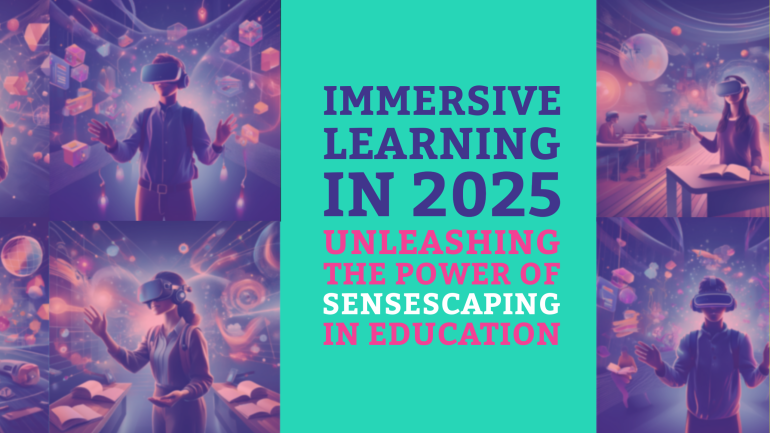Table of Contents
TL;DR: Setting Strategic Goals for Visionary Leadership in Higher Education
- Align goals with the institution’s mission: Strategic goals for higher education should be in line with the overall mission and vision of the institution.
- Focus on long-term impact: Strategic goals should not only address immediate needs but should also have a long-lasting impact on the institution.
- Involve stakeholders: It is crucial to involve faculty, staff, students, and other stakeholders in the goal-setting process to ensure buy-in and collaboration.
- Measure progress: Establishing key performance indicators (KPIs) and regularly monitoring progress is necessary to track the success of strategic goals.
- Adaptability is key: Higher education institutions should be flexible and ready to adjust strategic goals in response to changing circumstances and needs.
There’s no denying the importance of setting strategic goals in higher education. More than ever, institutions are facing increased competition, changing demographics, and technological advancements that require a clear roadmap for success. Establishing well-defined goals can help colleges and universities navigate challenges, seize opportunities, and ultimately drive student success and institutional growth. In this blog post, we will explore the important steps and considerations for developing strategic goals that align with the mission and vision of higher education institutions.
Establishing the Foundation
Assessing the Current Educational Landscape
For any higher education institution seeking to set strategic goals, it is imperative to first assess the current educational landscape. This involves understanding the trends, challenges, opportunities, and demands in the field of education. By conducting a thorough analysis, universities can identify areas for improvement and growth, thus laying a solid foundation for strategic planning.
Identifying Institutional Values and Mission
Foundation in developing strategic goals for higher education lies in identifying institutional values and mission. It is imperative to define the core principles and beliefs that guide the institution, as well as its overarching purpose and goals. By clearly outlining these values and mission, universities can align their strategic goals with their identity, ensuring a focused and impactful approach to growth and development.
With the values and mission serving as the bedrock of strategic planning, institutions can engage stakeholders effectively, attract like-minded partners, and inspire a sense of purpose throughout the organization.
Designing Strategic Goals
Engaging Stakeholders in the Process
There’s no doubt that engaging stakeholders in the process of designing strategic goals for higher education institutions is crucial. Stakeholders, including faculty, staff, students, alumni, and community members, bring diverse perspectives and valuable insights that can shape the direction and priorities of the institution. By involving stakeholders in the process from the beginning, institutions can ensure buy-in, alignment, and a shared sense of ownership over the strategic goals.
Prioritizing Areas for Strategic Development
Designing an effective strategy involves an in-depth analysis of the institution’s strengths, weaknesses, opportunities, and threats. An necessary part of this process is prioritizing areas for strategic development. This involves identifying key areas where the institution can make the most impact and allocating resources strategically to achieve the desired outcomes. It is important to consider the institution’s mission, vision, and values when prioritizing areas for strategic development.
Process: When prioritizing areas for strategic development, institutions should consider factors such as market demand, competitive landscape, technological advancements, and the needs of the community. It is important to involve key stakeholders in this process to ensure alignment and support for the chosen strategic priorities. By focusing on the most important areas for development, institutions can maximize their impact and create a clear roadmap for success.
Implementation and Sustainability
Translating Goals into Actionable Plans
Now is the time to convert the strategic goals of higher education institutions into actionable plans. This process involves breaking down the broader objectives into specific tasks, assigning responsibilities, setting timelines, and allocating resources effectively. By clearly outlining the steps needed to achieve the goals, institutions can ensure that progress is made towards their desired outcomes.
Monitoring Progress and Measuring Success
Any successful strategic plan for higher education must include regular monitoring of progress and mechanisms for measuring success. This involves setting key performance indicators (KPIs) and establishing benchmarks to track advancements. Through consistent evaluation and analysis of data, institutions can identify areas of progress, address any challenges proactively, and make necessary adjustments to ensure the attainment of their strategic goals.
Progress monitoring enables institutions to stay on course and make informed decisions to drive continuous improvement. By utilizing data-driven insights, higher education organizations can celebrate achievements, address shortcomings, and ultimately enhance their performance and sustainability in the long run.
Challenges and Considerations
Addressing Common Obstacles in Goal Setting
All institutions face common challenges when setting strategic goals for higher education. An vital step in tackling these obstacles is identifying and understanding the barriers that may impede progress. Some typical hurdles include resistance to change, lack of resources, unclear priorities, and competing agendas. To address these challenges effectively, it is crucial to engage stakeholders, communicate transparently, and create a shared vision that aligns with the institution’s mission and values.
Adapting to Changing Educational Needs
The landscape of higher education is continuously evolving, driven by technological advancements, changing student demographics, and emerging educational trends. The ability to adapt to these shifting needs is paramount in developing strategic goals that remain relevant and sustainable. Institutions must be agile and responsive to market demands, integrate innovative pedagogical approaches, and prioritize lifelong learning initiatives. Embracing flexibility and foresight in goal setting enables institutions to stay ahead of the curve and meet the diverse educational needs of students and stakeholders.
Understanding the dynamic nature of the higher education sector is vital for institutions aiming to set strategic goals that pave the way for success. By embracing proactive planning, fostering a culture of innovation, and investing in professional development, institutions can position themselves as leaders in the ever-changing educational landscape.
To wrap up
Following this, it is clear that developing strategic goals for higher education institutions is crucial for their success and sustainability. By setting clear objectives, aligning resources, and measuring outcomes, institutions can make informed decisions that lead to continuous improvement and growth. Strategic goals provide a roadmap for navigating challenges, seizing opportunities, and staying relevant in an ever-evolving landscape. It is crucial for higher education leaders to engage stakeholders, gather input, and communicate effectively to ensure buy-in and commitment to the strategic plan. Ultimately, a well-defined set of goals can drive innovation, foster collaboration, and enhance the overall impact of higher education institutions in shaping the future workforce and society.
FAQ
Q: What is the importance of developing strategic goals for higher education?
A: Developing strategic goals for higher education is important for institutions to establish a clear direction, prioritize initiatives, allocate resources efficiently, and measure success effectively.
Q: How can higher education institutions define their strategic goals?
A: Higher education institutions can define their strategic goals by conducting a comprehensive assessment of their current state, identifying areas of improvement, aligning goals with their mission and vision, and involving key stakeholders in the goal-setting process.
Q: What are some common challenges faced in the development of strategic goals for higher education?
A: Some common challenges include resistance to change, lack of buy-in from stakeholders, insufficient data for decision-making, competing priorities, and difficulties in tracking progress and measuring outcomes.
Q: How can institutions ensure successful implementation of their strategic goals in higher education?
A: Institutions can ensure successful implementation by creating a detailed action plan with clear timelines, assigning responsibilities to individuals or teams, fostering a culture of accountability and transparency, and regularly reviewing and adjusting goals based on feedback and evaluation.
Q: How can the achievement of strategic goals benefit higher education institutions?
A: The achievement of strategic goals can benefit higher education institutions by enhancing their reputation, attracting top talent, increasing student enrollment and retention, improving academic quality, fostering innovation, and ultimately securing long-term sustainability and success.




